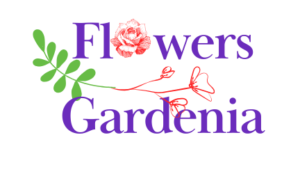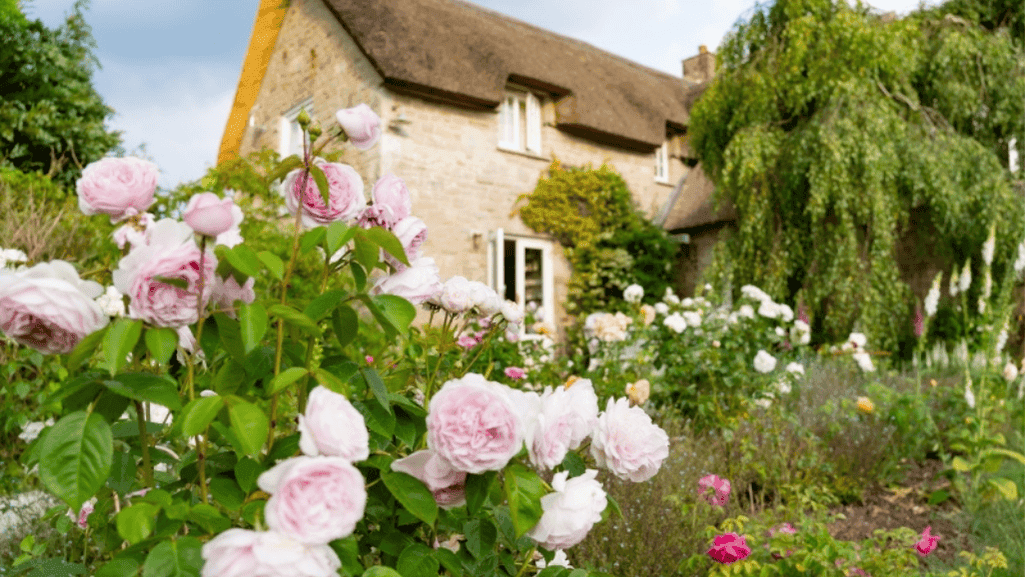
Beautiful flowers gardenia Plants For Your homes

A cottage garden blends beauty and utility by layering flowers, herbs, and edibles into dense, informal beds that look effortless over time. This garden style favors curving paths, rustic arbors, and packed borders that give fragrance and seasonal interest in a small yard.
Think of this guide as a practical list for design moves and plant choices that suit diverse U.S. regions. You will find layout tips, layout sequencing from smallest to tallest, and reliable perennials, shrubs, annuals, and grasses.
Modern takes still echo their roots, pairing classic roses and self-sowers with native, resilient plants to cut maintenance. The result is a lived-in, welcoming country feel that blends form and function.
Start small and add layers each season. With the right plants for your site, a compact plot can knit together into a scented, textured garden that stands the test of time.
Old working plots of vegetables and herbs evolved into the lush, scented borders we prize today. Early plots were all about food, fruit trees, beehives, and practical yields. Over time, fragrant old roses and simple flowers filled the gaps and softened the beds.
Hallmark traits show up in every successful plot: relaxed layout, dense plantings, mixed herbs and vegetables, and a scent-rich tapestry that invites lingering.
The style endures because it is forgiving and space-efficient. Closely packed plants shade weed-prone soil and hold moisture, while paths keep beds accessible for timed maintenance each year.
Use local, climate-suited garden plants and you get the same charm with less work. In short, this traditional cottage garden approach links heritage and modern living while celebrating serendipity and friendly upkeep.
Early working plots were practical first: small holdings for vegetables and herbs supplied food, medicine, and dye for a household.
One theory ties the rise of these plots to land shifts after the Black Death, when more people gained access to small plots. Beds often included fruit trees, beehives, wells, and even a few animals for milk and compost.
Writers like John Claudius Loudon recorded working gardens and urged hardy, useful planting. Later, William Robinson and Gertrude Jekyll in the Arts & Crafts era reframed the style.
Their work favored simple, resilient plants and natural color harmony. That shift turned a household solution into the old-fashioned charm many people prize today.
As the idea reached America, it adapted. Regional natives, ornamental grasses, and local stone replaced some original species and materials.
In short, the traditional cottage garden evolved from everyday need to a flexible, country aesthetic. Its continuity rests on utility, informality, and approachable beauty—principles that lead into the design tips that follow.
Good garden design starts with movement—curves, sightlines, and access that invite exploration. Keep beds and paths scaled to your space so each area feels intimate yet reachable.
Sketch sinuous walkways that define small rooms and guide visitors past dense borders. Use turf, brick, or stone paths to add a lived-in, rustic feel and to protect packed beds.
Plant closely to form a tapestry of blooms and foliage. Leave narrow access gaps for pruning and deadheading so dense garden plants suppress weeds but stay manageable.
Pair complementary hues and repeat tones to create unity. Let leaves carry texture between seasonal bursts of garden flowers, and favor gentle repeats over strict palettes.
In short, prioritize movement, texture, and recurring color cues so the border reads as a layered, living mosaic where individual blooms shine inside a cohesive whole.
Start planning by mapping curving walkways that shape rooms and set the stage for layered planting.
Sketch meandering paths to carve the site into garden rooms. Keep routes wide enough for a wheelbarrow and to allow comfortable viewing and harvest access.
Edge beds with low growers, layer midsized perennials and annuals in the center, and place tall bloomers or shrubs at the back to keep sightlines open.
Position arbors at junctions, add fences to define rooms, and use stone for durable edging. Trellises and obelisks give vertical interest behind midborder plants.
Stagger bloom times across layers so the front, middle, and back each offer season-long interest. Finally, check mature widths and heights on labels so every part grows into place and the overall structure stays balanced.
For layout examples and planting lists that follow this approach, see cottage garden planning tips.
Choose plants that layer color and texture so the border stays full from spring into frost. A balanced mix of steady perennials and lively annuals keeps beds interesting with minimal fuss.
Build your backbone with coneflower, catmint, daylily, yarrow, Shasta daisy, and stonecrop. These perennials return reliably and provide steady blooms through summer and into fall.
“Choose cultivars known for reblooming and compact habits to cut maintenance.”
Anchor beds with hydrangea, lilac, spirea, and roses. These flowering shrubs give height, seasonal mass, and textured foliage that reads well between peak bloom times.
Fill gaps with sweet alyssum, phlox, and salvia to bridge seasons. Annuals brighten edges and reward quick planting with long display.
Include fountain grass and similar companions for movement and seedhead interest. Grasses complement stonecrop and hydrangeas and improve late-season structure.
Tip: Use zone hardiness, height, and spread to place each plant where it will thrive. Group resilient choices to reduce watering and upkeep while keeping the plot full of garden flowers all season.
Herbs anchor the garden by supplying flavor, fragrance, and simple remedies. In a traditional cottage garden they served many uses: scenting floors, making salves, and flavoring meals.
Lavender, thyme, and rosemary belong near paths or seating. A brush of foliage releases scent and makes harvesting effortless.
Include hyssop, calendula, and yarrow for teas, poultices, and cosmetic uses. Calendula doubles as an edible flower and will self-seed for low-effort renewal.
“Treat herbs as both useful and ornamental; they enrich daily life and the wider planting.”
Tip: Harvest with care to encourage bushier growth and repeat flushes. Make the herb garden an integrated part of the plot so useful plants remain a living, fragrant part of daily routines.
Smart rose selection lets you add scent, height, and seasonal interest without turning your border into a maintenance chore.
Mix shrub and climbing types to anchor beds and create vertical accents that frame paths and seating. Combine old garden forms like Rosa gallica and Damask with modern hybrids for repeat performance and stronger disease resistance.
Older roses offer deep scent but may bloom on last year’s wood. Handle pruning gently to preserve next season’s flowers.
Pair them with reblooming varieties to keep continuous color and steady blooms through summer and fall.
Train climbers onto arches and fences and weave clematis through canes for layered color without crowding the rose. Underplant with catmint, salvias, or low dianthus to hide bare stems and attract pollinators.
“Let the rose play its part in a mixed border—scented, integrated, and supportive of other plants.”
Vertical planting lets a small plot feel taller and more layered without losing informal charm.
Honeysuckle and clematis are classic choices to soften arbors and fences. European honeysuckle adds scent and swathes of small flowers, while many clematis hybrids give larger, showy blooms that extend the season.
Pair a fragrance-rich honeysuckle with a late-flowering clematis to stagger color and scent. Train the vines so each gets light and you avoid dense tangles that harm foliage.
Ramblers send long, flexible canes that drape gracefully over trellises and walls. Climbers have stouter canes and larger flowers, so anchor them firmly to supports.
Place trellises at path bends and seating areas so vertical elements shape rooms and views. Use sturdy wood or metal supports that age well and match the garden’s informal structure.
Select regionally proven perennials and shrubs so the plot thrives with less work. Start by choosing plants that match your sun, soil, and moisture. This makes a modern cottage garden resilient and simpler to care for year-round.
Pick perennials like catmint, daylily, stonecrop, and yarrow that grow well in your zone. Add hydrangea and lilac as flowering shrubs for backbone and seasonal shape.
Favor natives and locally adapted options to cut watering and pest work. Use annuals—phlox or sweet alyssum—to plug gaps and tweak color quickly.
Plant bee balm, coneflower, salvia, and non-invasive butterfly bush cultivars to support pollinators through summer and beyond. Ornamental grasses add movement and drought tolerance while extending seasonal interest.
“Right plant, right place keeps beds full and pollinators fed with minimal upkeep.”
A well-planned plot balances spontaneity with small, steady choices that add up over seasons. Layered planting, curving paths, and rustic structure create a garden that feels both useful and beautiful.
Add a few perennials, a shrub, and seasonal annuals to close gaps while the backbone matures. Repeat colors and drifts of flowers and foliage so the view reads as one cohesive whole from any vantage point.
Match every plant to your site and climate for lasting bloom and lower upkeep. Let local natives and modern cultivars inform your choices so the space supports pollinators and daily use.
Sketch a path, pick three plants, and begin—the best ideas grow gradually. Over time your country-inspired plot will feel richly lived-in and unmistakably yours.
